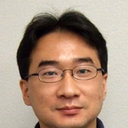Low But Continuous Occurrence of Microsporum gypseum Infection in the Study on 198 Cases in South Korea from 1979 to 2016.
Ключови думи
Резюме
UNASSIGNED
Microsporum gypseum has been isolated from South Korea since 1966. However, the incidence of M. gypseum infection is very low.
UNASSIGNED
The aim of this study is to add massive data on M. gypseum to the literature and to provide useful information on clinical and mycological characteristics of M. gypseum.
UNASSIGNED
We retrospectively analyzed data of 198 cases infected with M. gypseum from 1979 to 2016. The identification of M. gypseum was done with mycological examination using 15% KOH preparation and potato corn meal tween 80 agar culture media.
UNASSIGNED
The incidence of M. gypseum infection was very low in South Korea, showing a tendency to decrease. Out of 198 cases, men were 94 cases (47.5%) and women were 104 cases (52.5%). Mean age of all patients was 29.83 years old: 24.97 years old in men and 34.22 years old in women. M. gypseum infection occurred most frequently in September (16.7%) and August (16.2%). The most common clinical type of M. gypseum infection was tinea corporis (38.4%).
UNASSIGNED
M. gypseum infection shows very low incidence but still remains around us until recent years. We should keep in mind the characteristics of M. gypseum.


